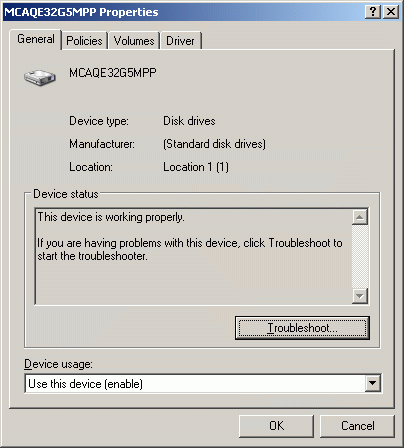Conventional Hard Drive Obsoletism? Samsung's 32 GB Flash Drive Previewed
Installation
Mounting the Flash drive is easy, and the device is detected much like any normal hard drive, appearing as a system device:
The platform provides random access identical to conventional drives, but makes seek times for sector data irrelevant. Seek times are virtually instantaneous at 0.2 ms, and rotational latency found in spindle based units is no longer a factor.
Possible Applications For Difficult Operating Enviroments
Samsung states the drive has a virtually "unlimited resistance" against impact, over 1000 G. Platter based solutions have a maximum listed impact of only 500 Gs (non-operating), which solidifies the case for using a solid state solution for portables or "toughbook" style applications.
There are other advantages to the SSD, such as extended range of operating temperature. For most drives, ambient operating temperature is in the 0°C to 50°C range, and their traditional mechanics generate more heat due to the mechanical movement. Not only is there an absence of moving parts helping to keep temperature lower, and effectively reducing vibration, but the unit's operating range encompasses -25°C to 85°C. This makes sense for field portables or devices that are subject to thermic discrepancies.
Let's take a look at how the Samsung 32 GB Flash drive compares to standard hard drives it is looking to replace. On to the tests!
Get Tom's Hardware's best news and in-depth reviews, straight to your inbox.
Current page: Installation
Prev Page Samsung Flash SSD Features And Specifications Next Page Test Setup